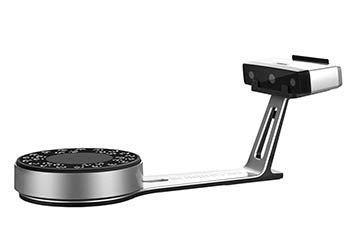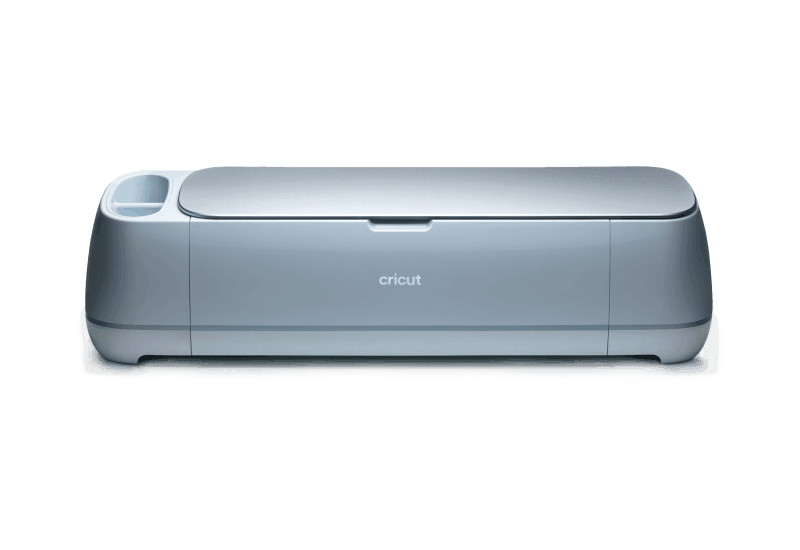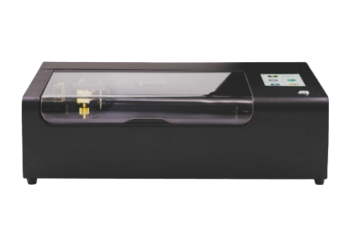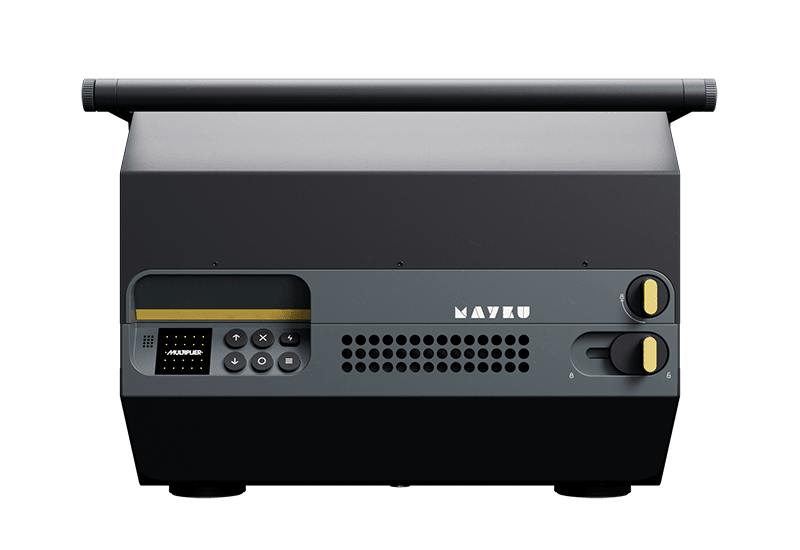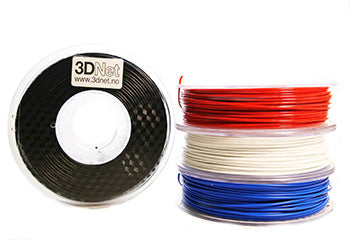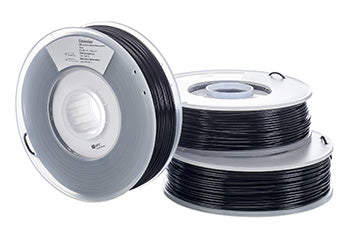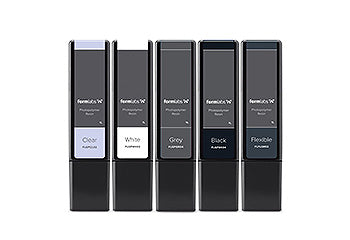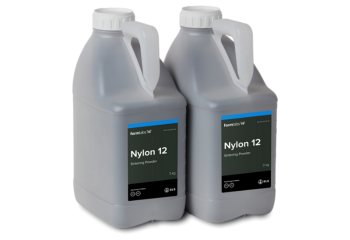Handlevognen din er tom
The Olsson block-kit is a third party upgrade for the Ultimaker2 family which allows you to quickly and easily change nozzles. This allows you to change nozzle sizes to suit your project. A larger nozzle for faster printing, or a smaller nozzle for more details. It's also useful when printing abrasive materials as it's cheaper and faster to replace the nozzle rather than replacing the original nozzle+heaterblock. There are also stainless steel nozzles available for purchase which are more resistant to abrasion.
Installation time: 30-120 minutes
Difficulty: Intermediate. You should be comfortable servicing your machine.
Background and history
The upgrade was originally designed by research engineer Anders Olsson from Uppsala University as a need for a research project. It has then mainly been further developed and manufactured by Carl Beck of 3dSolex, with great feedback from the Ultimaker user community. From early on, 3DVerkstan has been a close collaboration partner to Anders and Carl to make sure the product can reach a bigger user base, and to make sure that it gets further improved with good quality assurance, installation and support instructions. This installation guide is part of this work.
Spare PT100 B temperature sensor
You should make sure that you have a spare PT100 B sensor on hand before starting this upgrade, or be comfortable waiting for delivery. The reason is that you run the risk of breaking the sensor when performing this upgrade. If you have recently bought an Ultimaker 2, you will have an extra PT100 in the Ultimaker 2 Hot End Pack delivered with the machine. If you do not have a spare one, you can order one from your local reseller.
Print the torque wrench
 If you don't already have the torque wrench printed, you should go ahead and do that before you start disassembly. It is not strictly required, but it is very helpful to make sure you are not over tightening the nozzle. You can download the files here: Torque wrench by Anders Olsson. Make sure you follow the instructions. You can also use this ready made gcode-file.
If you don't already have the torque wrench printed, you should go ahead and do that before you start disassembly. It is not strictly required, but it is very helpful to make sure you are not over tightening the nozzle. You can download the files here: Torque wrench by Anders Olsson. Make sure you follow the instructions. You can also use this ready made gcode-file.
Let's get started with installation! Continue reading below.
Remove filament
Start by removing the filament in your printer. It's a good idea to do an Atomic to get rid of all filament remnants so that they don't get in the way later.
Remove the fan shroud
Remove the fan shroud by unscrewing the four screws that hold it in place. There are two screws on each side. Be ready to catch those little buggers as they have a tendency to bounce around and get lost if you drop them. Once the screws are removed you can slide the fan shroud off the head. Use a piece of tape to keep it out of the way. Be careful that you don't poke something into the third fan on the head if it is running.
 There are two screws on each side.
There are two screws on each side.
 Taping the shroud out of the way is optional but it does help.
Taping the shroud out of the way is optional but it does help.
Unscrew the nozzle+heaterblock
You can now start to unscrew the nozzle by inserting a small screwdriver into one of the holes in the ring indicated below and turning anti-clockwise (you can remove the front left thumbscrew temporarily to give yourself more room to work). Be careful here and only use moderate force. If it does not move it means that there is plastic in the threads keeping the ring in place. You will have to heat up the print head to soften the plastic, around 100C will likely do the trick. Heating up the print head is done via the menu on the printer:Maintenance -> Heatup Nozzle. Once heated it should be fairly easy to rotate the ring. Keep turning the ring until the nozzle drops out. Remember that the nozzle is very hot so make sure you don't try to catch it or allow it to touch any of the plastic parts of the print head.
 You might notice some brown residue that looks almost like rust underneath this ring. Don't worry, it is not rust but copper grease that was put there intentionally.
You might notice some brown residue that looks almost like rust underneath this ring. Don't worry, it is not rust but copper grease that was put there intentionally.

Remove heater and temperature sensor
 Don't forget to turn off the printer, or turn down the heat at this point. If you don't, the heater will start heating up very rapidly once you get it out of the block. You will now have access to the screw that locks the heater cartridge and temperature sensor in place. Use one of the allen keys that were supplied with your printer to unscrew it. Hold the block with a pair of pliers and make sure that the block doesn't touch any plastic parts of the printer, or your fingers, if it is hot.
Don't forget to turn off the printer, or turn down the heat at this point. If you don't, the heater will start heating up very rapidly once you get it out of the block. You will now have access to the screw that locks the heater cartridge and temperature sensor in place. Use one of the allen keys that were supplied with your printer to unscrew it. Hold the block with a pair of pliers and make sure that the block doesn't touch any plastic parts of the printer, or your fingers, if it is hot.
 The heater cartridge, the larger part on the left, will likely come out easily. The temperature sensor is another story, this one will very often be stuck quite hard.
The heater cartridge, the larger part on the left, will likely come out easily. The temperature sensor is another story, this one will very often be stuck quite hard.
If you are very lucky the sensor will come out with a light tug on the wire, but it's unlikely. If you are slightly less lucky you will see a little bit of the metal can sticking out that you can grab with pliers. If not, you will have to pull it out with some gentle force (yes, that's a bit of an oxymoron). The first thing to try is to use a pointy tool, like an awl, and see if you can manage to get a hold of the sensor and gently pry it out. The cartridge is crimped onto the wire and sometimes it's possible to get the awl underneath the crease of the crimp and lever it out.

If this doesn't work, use a pair of pliers and gently grab the wire and try to pry it out by using the block as a fulcrum. Doing this rather than simply pulling straight out gives you more control. As soon as you see a bit of the tube poking out like in the picture above, stop.
What you want to do now is to grab some sharp side cutters and gently pinch the tube and pry it out bit by bit. Doing it this way you are not putting any pressure on the connection which will increase your chance of success.

Now, of course, you could just try to pull it straight out and it might work, but the risk of breaking the sensor increases significantly. A bit of patience here beats spending the time to replace the sensor completely.
But, if the sensor does break, scroll down to see how you go about replacing it.
Install the block
Now it's time to attach the Olsson-block. Start by unscrewing the set screw most of the way. The reason for this is two fold. For one, it makes it quick to install the block as you can just screw it in quickly with your fingers instead of turning the ring like you did when removing the stock nozzle+heaterblock.
Secondly if you install the block with the screw all the way in (in this case you need to twist the ring) there's a good chance that the screw binds up in the hole which makes the block tilt.

Screw the block into the ring making sure you put it in straight. If you encounter a lot of resistance, make sure you haven't cross threaded the block. If that's not the issue, check that the threads on the Olsson-block look ok.

Next up you will insert the heater cartridge and temperature sensor. It's important that you make sure they go all the way in. You should be able to see them through the holes of the block.

Secure them in place by screwing in the set screw. It will go through a hole in the lower metal plate of the print head so make sure it enters the hole properly before you start tightening so that you don't damage anything.

IMPORTANT! You MUST make absolutely sure that the heater cartridge and temperature sensor are held securely in place.
You must make absolutely sure that they cannot fall out. There are safe guards in the firmware to prevent damage to occur if they do, but as the firmware can be modified it's better to be safe. Tighten the screw so that it is at least flush with the block.

Then tug on the wires to check that they are held in place firmly. If not, tighten the screw a little bit more and check again. The included screwdriver is supplied in case you do not own any other screwdrivers but it is difficult to get much power behind it. If you find that you can not tighten the screw enough with the included driver, please use a full size screwdriver to complete tightening. Just don't go Hulk-mode and overtighten the screw too much.

Next up you will re-attach the fan shroud. It's important to make sure that no part of the fan shroud is touching the block. If they are in contact it will act as a big heatsink drawing heat away from the block leading to the printer likely throwing a heater error and stopping. The reason is that the heater cartridge is not capable of sustaining the requested heat when heat is being wicked away by the fan shroud.
Take a look in the gap here and make sure nothing is touching on the bottom or on the side.

Also check where the block is peeking through the fan shroud, it is very easy to make contact here.

If you find that some part of the block is in contact with the shroud you can usually correct this by gently bending the fan shroud a little bit with a pair of pliers. If you loosen the screws that hold the shroud in place you will also find that there is quite a bit of wiggle room available for adjustment.
Install nozzle
The final step of assembly is to choose which nozzle you want to use and screw it into the block. Since the block is brand new and clean you can do this while the block is cold. Simply screw it in by hand and tighten it up the last way with the printable torque wrench.

After you have started using the block it is very important that you heat the block up to printing temperature before tightening. If you don't, there's a good chance that some leftover plastic will prevent you from tightening the nozzle fully which will result in filament leaking out and making a mess. It is equally important to heat the block up when removing the nozzle as it will be locked in place by cold plastic.
We would also recommend that you do an Atomic before switching nozzles. That way you minimize the risk of left over plastic. A bonus is that the next time you switch to that nozzle you wont have any leftover plastic discolouring your print. It's a bit of a bummer if you are trying to print a white object and it comes out pink because you had some leftover red plastic in the nozzle.
Re-level your platform!
Don't forget to re-level your print bed after the installation of the Olsson block. Your new nozzle sticks down further than the stock nozzle and will crash into the platform if you forget this step. You can start this procedure via Maintenance -> Build platform
Replace temperature sensor

Replacing the sensor is very straight forward. You'll need to first remove the heat shrink tubing around the wire mesh at the top of the print head (if present) to make it possible to pull the wire through. It's hiding down inside the print head so you might have to use some pliers to pull it up. Then simply cut it off, it's only there for cosmetic reasons.
Next up you'll have to flip the printer over to get access to the cover plate that hides the controller board underneath. It's the bigger of the two covers that you want to remove and it is simply held in by two screws. To reach these screws you will have to raise the print bed. With the power off you can do this by simply grabbing the bed towards the back of the printer (to avoid flexing the bed) and pulling it upwards.
Once you have removed the cover you will find the sensor connected to "TEMP1". It's the connector with three thin wires coming out of it.

You will find that the black wire mesh from the top of the printer enters this compartment in the corner of the printer. It's possible that there will be some heat shrink tubing here as well that you will need to cut off.
Next up you will guide the new sensor through the wire mesh. Do this from the bottom side of the printer. To make things easier for yourself you can unclip the black clips around the wire mesh so that you get more room to work. The trickiest area to get past is the sharp bend next to the feeder on the back of the printer. Try to straighten out the wire mesh as much as possible here to make it easier.
One thing to be cautious about is the connector. As you can see the wires are very thin and you can easily rip them out of the connector. So make sure that you handle it carefully during the install.

Once the new sensor is through, simply disconnect the old one and plug the new one in. Make sure it is fully inserted into the connector.


